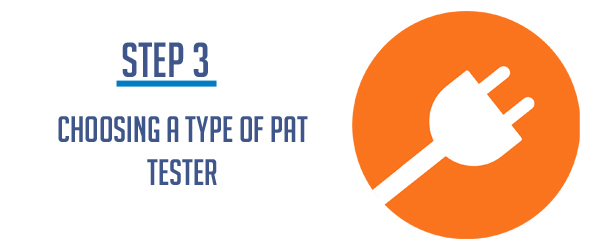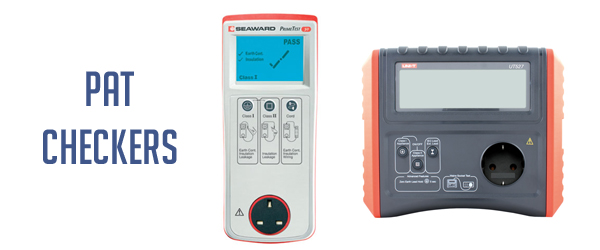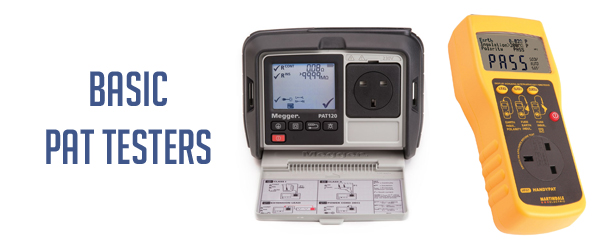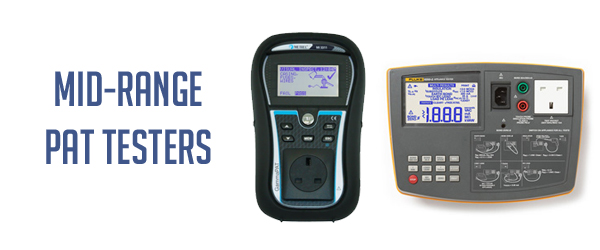Baffled by portable appliance testing? No idea whatsoever where to begin? Never fear - the PAT experts are here to help.
Don't think you're alone in wondering what PAT tester is right for you. With loads of models on the market, all with different capabilities, it can be very confusing as you try to work out exactly which one is right for your application.
This blog is designed to hopefully help you understand the difference between several types of PAT tester and to hopefully help you figure out which type you need.
Whoa there - don't just jump in at the deep end!
Although it is true that anyone can perform PAT testing, you must be deemed 'competent' to do so. Although there is no legal requirement for someone to attend PAT training, it is strongly recommend that you do so in order to make sure you understand how the testers work, and how to perform the procedures.
There is no complete definition of what makes someone competent, although an understanding of how appliances work, and electricity, is pretty essential. The Electricity at Work Regulations of 1989 state that where required, inspecting and testing must be carried out by a competent person, but there is no benchmark for what this means. It has become common in recent years for most people who want to PAT test to gain this competency through training, although for those with an electrical background already, this may not be necessary.
Before you even consider buying a PAT tester, also consider your training. There are many different options available out there for training you up to be a PAT tester (we ourselves run regular training courses throughout the year, and also have an online PAT training course where you can learn from home or at work).
For more information on our training options, visit one of the following links:
- Nationwide PAT Testing Training Courses - head on over to electricaltrainingcourse.co.uk
- PASS's accredited online PAT training course - click here for more information
Once you're trained, you need to figure out exactly what type of appliances you'll be testing, and how often you'll need to do it.
For example, if you were a small charity or office with only a few appliances, you'd be testing likely once every couple of years. In comparison if you're considering starting your own PAT testing business, you'll probably be testing constantly, checking thousands of appliances every year.
For those with a small amount of appliances to test, there is little point in shelling out a fortune on a really expensive tester, as it'll be full of features you don't need. In comparison, a professional user is much more suited to what's known as a professional-grade PAT tester, as these include several advanced features designed to make life easier.
You may also be using specific equipment that uses 110V supply. If this is the case, you'll need a tester with 110V capability in order to test these appliances accurately and safely (we'll get into that more further on in the article).
Consider the following:
- Where? - what type of environment are you in? Are you in an office, or somewhere like a construction site?
- How often? - environments with less of a risk than others - e.g. offices - don't have to test as often as construction sites and other areas where equipment will be used by the public
- What are you testing? - think about how many appliances you have to test, and what they are. If they're basic appliances, you won't need a more advanced tester with complex testing procedures. If you had equipment for hire, or workshop equipment, you'd need a higher-end tester that can perform what's known as a flash test
- Do you have 110V equipment? - most testers have this capability, but you may require an optional adapter to perform this test
Now that you've thought about that, it's time to get into the details about what types of PAT tester there are.
Here at Tester.co.uk, we classify our PAT tester into four groups: basic PAT checkers, basic PAT testers, mid-range and professional.
The idea here is simple: if you're testing not very frequently, want something basic and don't test many appliances, opt for a PAT checker or a basic tester. If you're testing a larger amount of appliances regularly, or have specific types of equipment not suitable for normal testing, it is best to opt for a mid-range or professional tester.
Although the capability of each tester varies depending on the particular model, this outlines the basic difference between each type of tester.
As simple as it gets, PAT checkers do the bare minimum you need to ensure an appliance's electrical safety.
Here's a few facts you need to know about PAT checkers:
- They're best suited for those new to the industry, or those with a small amount of appliances to test not very regularly
- They're perfect for small offices, shops and charities
- They're extremely easy to use - with a training course already under your belt, you're ready to test almost instantly
- They perform all basic electrical checks, including insulation and earth continuity
- They only display testing results as PASS/FAIL indicators - they do not have the ability to show full testing results
Recommended for use by: those brand new to PAT testing, or those with an extremely small amount of appliances to test
Top Rated PAT Checkers
Still made with beginners in mind, PAT testers with basic classification are designed to do the bare minimum you'll need to verify an appliance's electrical safety. Unlike PAT checkers, basic testers are capable of displaying full test readings alongside a PASS/FAIL indicator (ideal for keeping comprehensive logs of your tests).
As their name suggests, they're made with beginners in mind.
Here's what you need to know about basic PAT checkers:
- They don't have built-in memory - you'll have to jot down your testing results yourself
- Made with simplicity in mind - no advanced features with easy access to the tests you need
- Suitable for IT and 110V equipment - specific modes cater for these appliances
- Perform all basic PAT tests - including 250/500V insulation tests, run/leakage testing, extension lead testing and more
- Dual indication - show full test results, plus PASS/FAIL indication
Recommended for use by: offices, shops, smaller hotels and charities. Ideal as a beginner option, or for those with a small amount of appliances to test.
Top Rated Basic PAT Testers
We're getting into the more complex options now. Mid-range models are ideal for those looking to start a PAT testing business, with upwards of 500 appliances to test per year.
Unlike basic testers, mid-range models come with a selection of extra functions (varies depending on model). Several - but not all - of the mid-range models are downloadable; this means they have integrated memory and you can log and download your testing data to PC (as long as you have the manufacturer's software, which is sometimes sold separately).
Due to the advanced capabilities, the price of mid-range models is significantly higher than basic testers. Prices still vary greatly, from as low as £270 to as high as just under £600. The more expensive models - such as Megger's PAT350 - have more features, including flash testing, configurable testing procedures, colour screen, QWERTY keyboard for amending testing records and more.
Here's what you need to know about mid-range PAT testers:
- More functions - some models have downloadable memory, making it easier to manage your testing records. Others might have flash testing, or configurable tests
- Wide variety of options - prices and functionaility depends on what you want to spend
- Different sizes - available from portable handheld units to bigger, bulkier testers best suited for on the bench
- Manual/automatic modes - speed up testing with automatic procedures, or take full control with manual mode (not available on all testers)
- Suitable for workshops - flash testing is sometimes required to check hire equipment and other appliances
Recommended for use by: those interested in starting a PAT testing business, or firms with more than 500 appliances to test per year. Also ideal for those who want the ability to log data automatically, rather than manually (not available on all testers).
Top Rated Mid-Range PAT Testers
- First Stop Safety MemoryPAT (Downloadable)
- Metrel MI3311 GammaPAT (Non-Downloadable)
- Metrel MI3311 GammaPAT Pro (Downloadable)
- Seaward PrimeTest 250+ (Downloadable)
- Fluke 6200-2 (Non-Downloadable)
- Megger PAT320 (Non-Downloadable)
Top of the range, professional PAT testers are the tools you need if you're serious about PAT testing.
Most commonly used by PAT engineers who actually do it on a daily basis as part of their work, they should be bought and used by people with thousands of appliances to test every year.
Every model in the professional range is a downloadable tester - you can expect to be able to store several thousand records on the tester's memory, and download it to PC. You will however need to consider software purchases, as this is often not included as standard with many of the testers (although there are exceptions).
Here's what you need to know about professional PAT testers:
- All downloadable - store and download information to your PC. Ideal for customer detail logging and for report printing
- Software often sold separately - available as an optional extra
- Varying designs - can be small and handheld, or extremely large
- Full configuration - some of the testers give users complete control over testing, with adjustable limits
- Risk-assessment tools - Seaward's Apollo testers also come with risk assessment capabilities (as required under the IET Code of Practice)
Recommended for use by: people serious about PAT testing. You should be testing thousands of appliances every year, and do PAT testing extremely regularly. Also ideal as a means of keeping customer and appliance data logged without lots of effort.
Top Rated Downloadable PAT Testers









